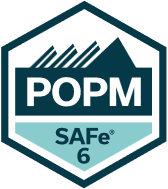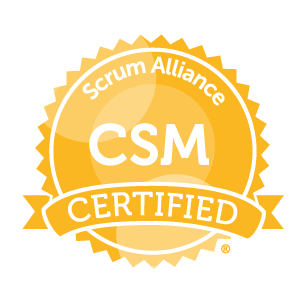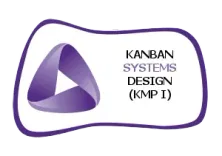
What is a Sprint Goal?
A sprint goal is like a short-term target that a development team sets for themselves during a sprint, which is usually like a 1-4 week period. The goal helps the team stay focused and motivated towards a common objective while working on a set of prioritized user stories or backlog items.
To make sure everyone is on the same page, the development team and product owner need to agree on the sprint goal, based on the priorities identified in the product backlog. Once they’ve nailed down the goal, it needs to be communicated to everyone involved, and progress towards it should be tracked regularly during the sprint.
At the end of the sprint, the team should review their progress towards the sprint goal and figure out if they hit the mark or not. This review process is a chance for the team to learn from their successes and failures, and improve their processes and practices for the next sprint.
What makes a good Sprint Goal?
The SMART Approach – In order to establish a Sprint Goal effectively, it is important to ensure that it meets the criteria of being Specific, Measurable, Achievable, Relevant, and Time-bound, commonly known as the SMART criteria. It enhances the probability of setting a clear and doable goal that helps your Agile team stay on track and focused. It also helps teams maintain their focus and alignment with their intended objectives.
Specific – A sprint goal should be clear and precise, avoiding ambiguity. The sprint goal should clarify what is to be achieved and the desired outcome. Avoid vague goals that create confusion and make it hard to prioritize tasks. It is crucial to have a clear understanding of the goals and a well-defined vision of what the sprint’s result should look like.
Measurable – A good sprint goal should outline how you’ll measure progress and define what “done” means. This helps avoid subjective judgments and ensures clear benchmarks for success. Measuring progress is vital in Agile, and having measurable criteria makes it clear when you’ve achieved your goal.
Achievable -Sprint goals must be doable within the sprint’s timeframe. Avoid making them too large by trying to tackle too many things at once or loading up the sprint backlog with too much from the product backlog. Instead, pick a workload from the product backlog that’s realistically achievable for the sprint.
Relevant – A relevant sprint goal directly supports your project or product’s main objectives and aligns with what your stakeholders need. It should be meaningful and connect to the bigger picture to ensure progress toward your project’s goals. Each sprint, while having its unique goals, should always work towards your product’s overarching vision.
Time-Bound – Sprint goals should be time-bound, usually aligned with the sprint’s duration. In Agile, sprints are typically short, lasting 2 to 4 weeks. Defining a time frame and a delivery deadline and arranging the sprint backlog in order of priority for your sprint goal creates a sense of urgency and concentration, helping the team plan their work effectively and stay on track and focused.
Clear purpose – To keep the team engaged and productive, create goals that explain why the sprint is important and how tasks connect for value. If the team can’t grasp the goal’s vision or it feels irrelevant, focus is lost. Sprint goals give direction and align the sprint backlog. If the purpose is unclear or disconnected from the work and value, it’s time to rethink. During Sprint Planning, ask, “How do we know if we’ve achieved the Sprint Goal?” Different answers or confusion mean it’s time to discuss and refine the goal. Keep everyone on the same page and excited about the sprint.
Visible Sprint Goal – Ensuring the sprint goal stays visible during the sprint is crucial. Continuously monitor your progress to stay on track. In your daily Scrum meetings, keep the shared goal at the center. Assess your progress, spot obstacles, and address hindrances. During the sprint retrospective, discuss your successes and challenges in reaching the sprint goal. Identify effective strategies and areas needing improvement for the next sprint. Keep the goal in sight and reflect on your journey.
Open to Goals and Adjustments – Agility allows for adjustments to goals and objectives, and adaptation can enhance the overall goal-setting process. Rather than considering sprint goals rigid, view them as guiding principles for decision-making. This will allow your team to remain focused on the primary objectives and the value it aims to provide even when new information surfaces, customer needs change, or unforeseen challenges arise. Embracing flexibility and being open to adjustments will ensure optimal alignment with your goals.
Provide Meaning to the team
Establish a clear connection between the sprint goal and meaningful impact, fostering intrinsic motivation among team members who seek purposeful work. The essence of the sprint goal lies in its connection to stakeholder needs, the customer journey, or the user experience of the product. Encourage a shared understanding of how their contributions directly contribute to the broader goals of the project. Make Sprint Goals more meaningful for the team by:
- Clearly defining how achieving the sprint goal directly benefits end users. Specify the actions or experiences users will gain with the new feature.
- Connecting the sprint goal to broader business goals. Highlight specific achievements or improvements in business areas resulting from the implemented enhancement.
- Emphasizing the sprint goal’s role in testing assumptions and gathering early feedback. Ensure alignment with user needs and the delivery of real value.
- Stressing the sprint goal’s focus on reducing risk by validating technologies and designs early. Early identification and correction of issues minimize the risk of costly changes later in the project.
When you’re starting a new release-
- The initial sprints might focus on figuring out the ideal user experience, software architecture, or viability. It depends on what risks you need to address first.
- After a few sprints, though, the focus shifts to finishing features and gathering data to understand the user experience. This change in focus should affect the sprint goal.
When you’re setting a Sprint Goal, keep in mind that you might need to experiment a bit to see what works best. It’s all part of the process, and it’ll help you achieve long-term success in the end.
Here’s a common structure you can use to create a Sprint Goal:
- Start with a verb to show what you want to accomplish
- Be specific about what you want to achieve
- Make sure it’s measurable and can be completed within the sprint time frame
- Ensure it’s relevant to the product backlog and customer needs
For example: “Develop a mobile checkout process that reduces cart abandonment by 20% by the end of the sprint.” This Sprint Goal is specific, measurable, realistic, and time-bound, and it focuses on a customer pain point that’s relevant to the product backlog.
Sprint Goals for the Win
Sprint Goals in Scrum are super effective for keeping the team focused and delivering value to the customer. They motivate the team, promote communication, and provide opportunities for learning and improvement. Plus, they’re a great way to make sure everyone is on the same page and working towards the same goal. In general, Sprint Goals are an essential part of Scrum and help teams deliver great results.















